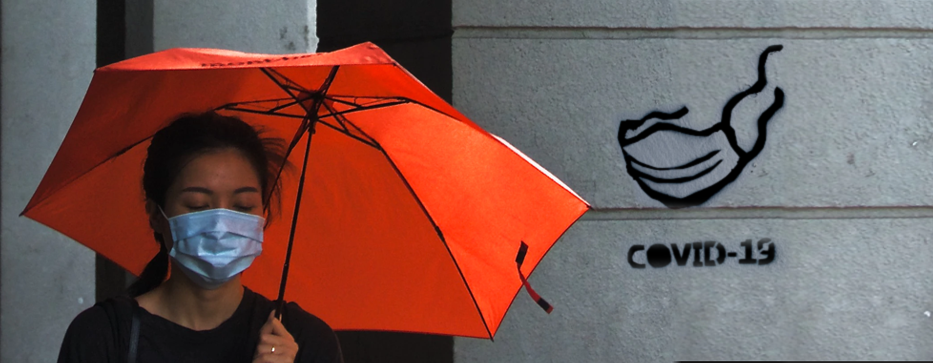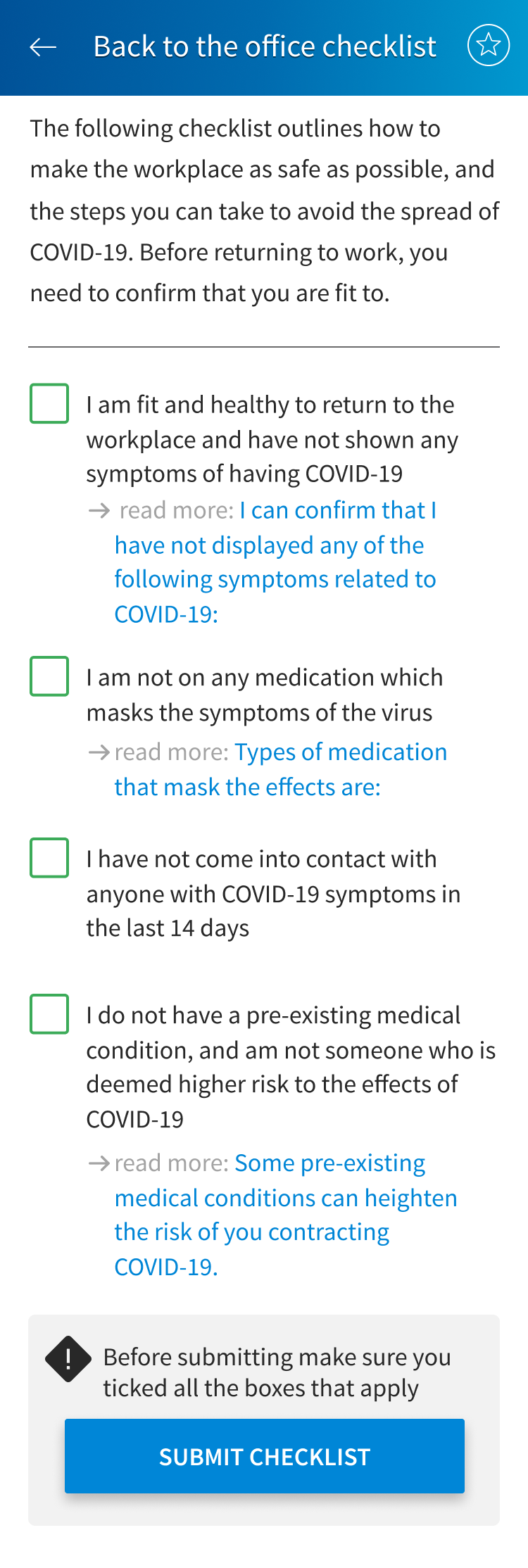Returning to work after lockdown with COVID-19 safety checklists



During the pandemic, our perceptions of a normal working day have been significantly altered.
Those key workers who are still in the workplace have already seen massive changes to their working environment. The rest of us will face these changes when we return to work.
What to expect when we return to work
For the employees, there is going to be a lot of new information to remember. That information will not be easily accessible, and that information will keep changing in line with the new guidelines.
In order for employees to be up to date and knowledgeable about all of the information available, they should be able to access it in and out of work.
Organisations need to know that staff are actively consuming this information. They also need to be able to adjust the guidelines as new information arises, and when the guidelines are changed, the new information needs to be quickly distributed to all employees.
Likewise, not all organisations will face the same challenges. Different guidelines will apply to different working environments, and many organisations will have lots of different environments that need to be covered.
Help employees to get back to work safely with Safety checklists
Working with MDs, health and safety professionals and occupational physicians, we have gathered the best professional insights into how businesses can cope when they start to return to work.
This, coupled with our knowledge of the technology and learning landscape, has put us in a unique position to offer a comprehensive checklist that can be instantly available to any and all employees.
The checklists that we have developed are specific to different job functions and different industries.
They clearly outline the dos and don’ts that employees have to adhere to when they are back in a workplace setting. These do’s and don’ts will have to be physically ‘checked off’ by the employee on a mobile or desktop app to show that they have understood what is required of them.
All organisations will have a complete overview of who has completed the checklists, and who has not.
As and when the guidelines or epidemiological situation changes, the relevant updates will be automatically applied to the checklists, regardless of industry or job role.
 An example of a checklist that needs to be read and submitted by an employee.
An example of a checklist that needs to be read and submitted by an employee.
Most of the common business types are covered:
- Production facilities
- Warehouses
- Bakeries, butchers, delicatessens
- Retail settings (with differing scenarios)
- Offices (with several variations)
- Restaurants, bars, cafes
- Tradesmen, repair services, cleaning services
- Construction sites
- Hair salons, gyms (and other health and beauty establishments)
- Deliveries
The benefits of COVID-19 safety checklists
For the employees, the checklists provide a clear outline of expectations, a constant reference point for when guidelines change, and a knowledge bank for any new or highly-specific health and safety situations.
For the organisation, they act as an insurance policy and provide a holistic view of who is adhering to the proper guidelines in order to prevent the risk of COVID-19 spreading in the workplace.
Through the JollyDeck platform, checklists are easily available through a web browser on any device, or accessible through a native mobile app.
In the backend, the JollyDeck platform provides a fully auditable log of submissions and relevant real-time reporting.
Ensure safe working environment and clear
guidelines for your employees!

